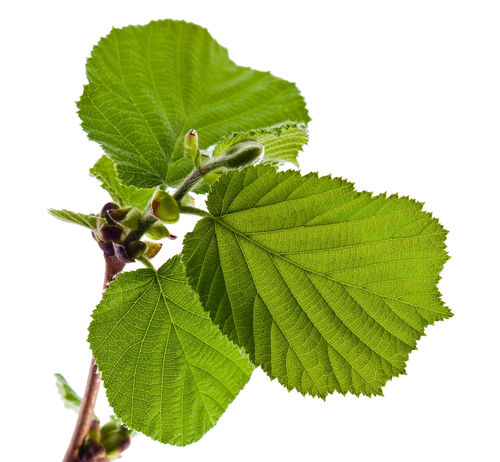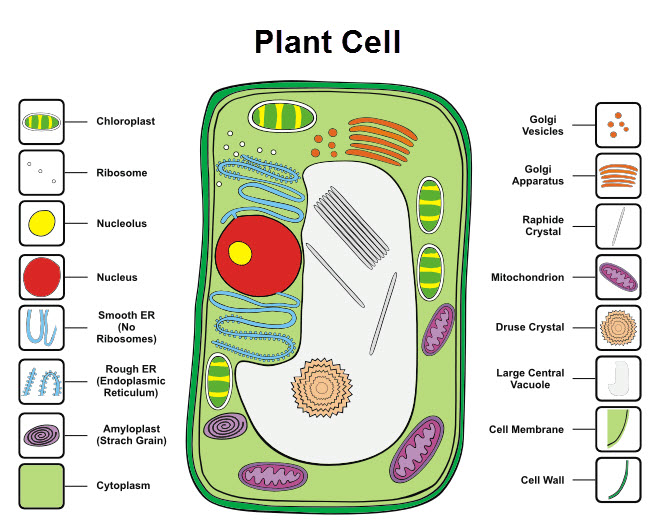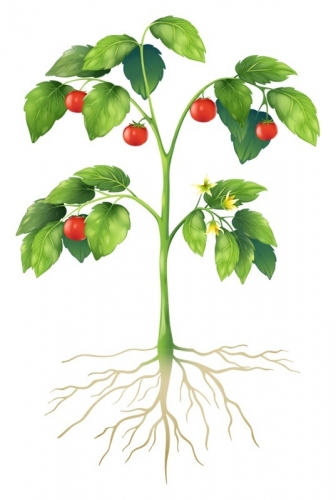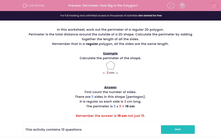
Plants produce their own food by a process called photosynthesis.
The green colour we see in leaves is due to a pigment called chlorophyll. The chlorophyll is found inside the chloroplast which is an organelle in the plant cell (see if you can spot the chloroplast in the image below).

Chlorophyll combines water and a gas (carbon dioxide) using light to make sugar (glucose) and oxygen. We can represent this as a word equation:
water + carbon dioxide + (light) → glucose + oxygen

The cells in the leaves are responsible for sugar production. This is why the leaves are normally broad, so they can capture enough sunlight to power photosynthesis. The sugar made in the leaves can be transported around the plant through the stem where it can be used for different processes like respiration. Water and minerals are also transported through the stem from the roots to the leaves.
Let's try some questions on this.








